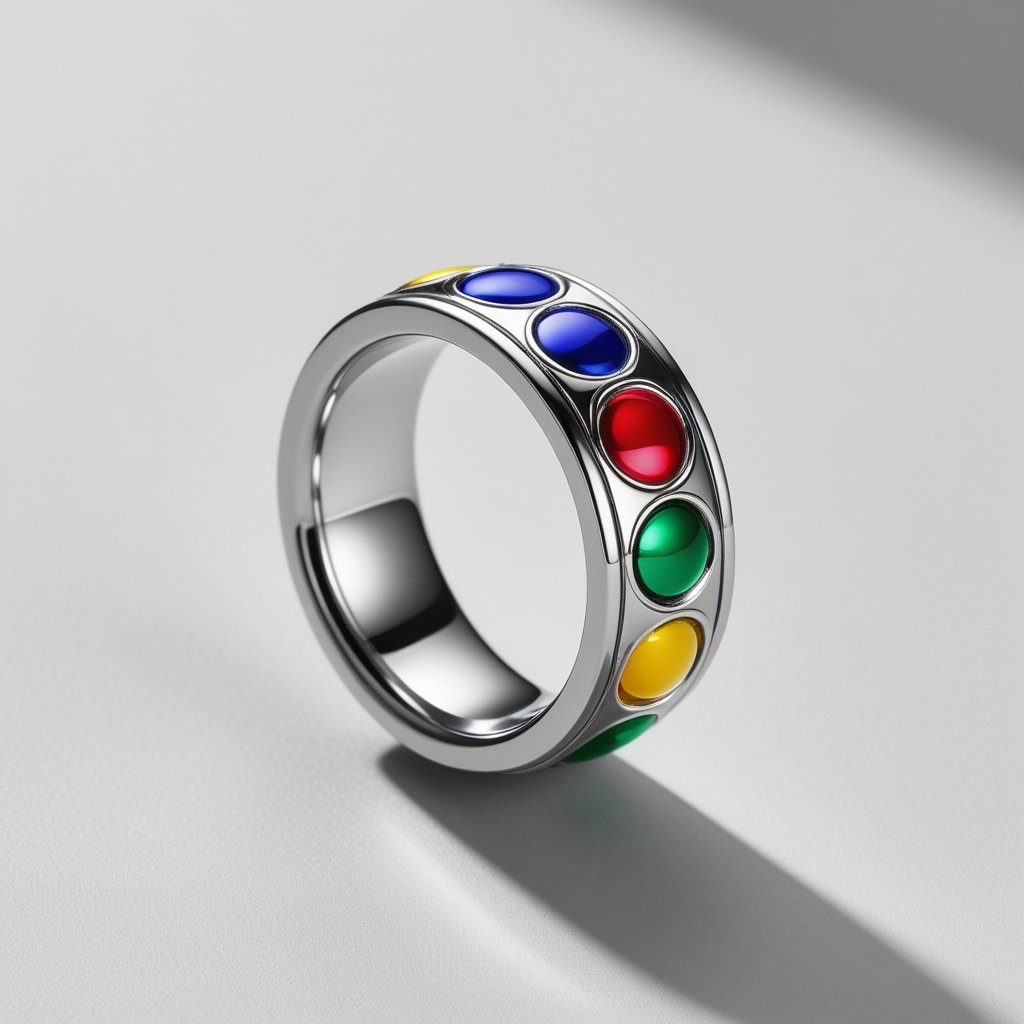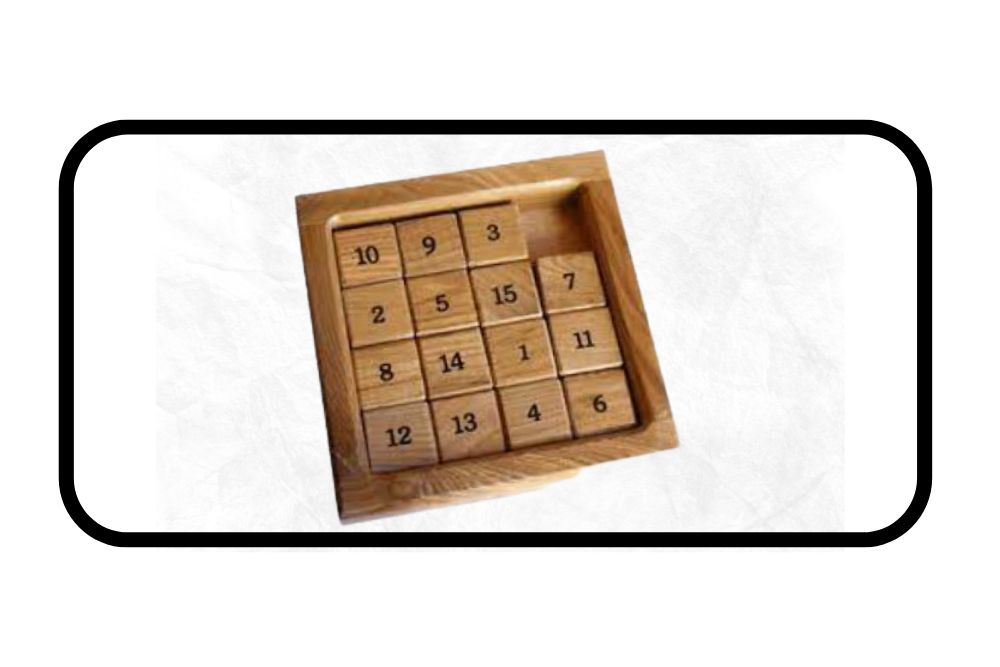Secret puzzle boxes, also known as mystery boxes or trick boxes, have captivated the minds of people for centuries.
These intriguing wooden contraptions are often beautifully crafted and can hold hidden treasures or messages inside.
Solving the puzzle to open the box can be a fascinating and rewarding experience, making them popular collectibles and unique gifts for puzzle enthusiasts.
The art of constructing and solving secret puzzle boxes dates back to ancient times, with examples found in many cultures worldwide.
The process of opening a secret puzzle box typically involves maneuvering, sliding, or rotating a series of wooden beams or panels in a specific sequence.
While some boxes can be opened relatively easily, others demand a keen eye for detail, patience, and persistence.
In this article, we will explore various techniques and strategies for unlocking these enigmatic boxes.
Whether you are an experienced puzzler or a newcomer to the world of secret puzzle boxes, this guide aims to help unravel the mystery and reveal the hidden treasures they may contain.
Understanding Puzzle Boxes
Puzzle boxes are a unique and fascinating category of puzzles that challenge both the mind and dexterity.
They come in various shapes, sizes, and complexities, with varying degrees of difficulty. In this section, we’ll cover Japanese Puzzle Boxes, the materials and craftsmanship involved, and the types and difficulties available.
Japanese Puzzle Boxes
These beautifully crafted wooden puzzle boxes, also known as “himitsu-bako,” have been popular in Japan for centuries.
They often feature intricate designs, such as the traditional Japanese art of yosegi-zaiku, an inlay technique used to create decorative patterns with various shades of wood.
A Japanese puzzle box can have as few as 2 beams or as many as 4, impacting the complexity and the process of opening the box. The goal is to uncover the hidden compartments, which often house a gift or a small item.
Material and Craftsmanship
Wooden puzzle boxes are typically made from high-quality wood, such as mahogany, walnut, or cherry. Craftsmen use precise woodworking techniques and attention to detail to create these intricate objects.
The boxes can feature a variety of designs, including yosegi-zaiku inlays or other exquisite patterns, that make them as visually appealing as they are challenging.
Types and Difficulties
There is an extensive range of puzzle boxes available, with varying levels of complexity:
To open a puzzle box, one must examine the outer design, count the beams, and try different methods, such as rocking or jiggling, until the hidden compartment reveals itself.
By understanding the type and complexity of the puzzle box, you can better appreciate the process of opening it and the satisfaction it brings when the secret is finally unveiled.
Step-By-Step Guide to Unlocking Puzzle Boxes
Step 1: Examining the Box
Start by carefully observing the puzzle box to identify its key features and components. Count the number of wooden beams surrounding the box, as this may provide clues for the unlocking process.
Different types of wooden puzzles have a varying number of beams, with some requiring extra steps for ‘opening’ if there are more beams.
Step 2: Finding Key Motions
Once you have analyzed the box, look for any possible patterns or key unlocking motions. These can often be found in the form of hidden sliders, buttons, or panels.
Determine the sequence of actions needed to unlock the box – think of aligning beams or locating the correct combination.
Step 3: Pressing and Sliding Techniques
Pressing and sliding certain components may be necessary to open the puzzle box. For boxes with fewer beams, the process is typically simpler, as it may only require minimal pressure applied on certain parts.
Conversely, boxes with more beams may require more complex pressing and sliding actions. It is crucial to maintain gentle pressure when handling the box, as forcing its elements could cause damage.
Step 4: Advanced Methods
Some puzzle boxes may require more advanced techniques to unlock. Knowledge of specific dimensions, unique patterns, or particular tools can be essential in successfully opening certain boxes.
If you find yourself stuck, do not hesitate to consult additional resources like tutorials or videos to obtain further guidance on unlocking the box. Remember, patience and attention to detail are key factors in solving a puzzle box.
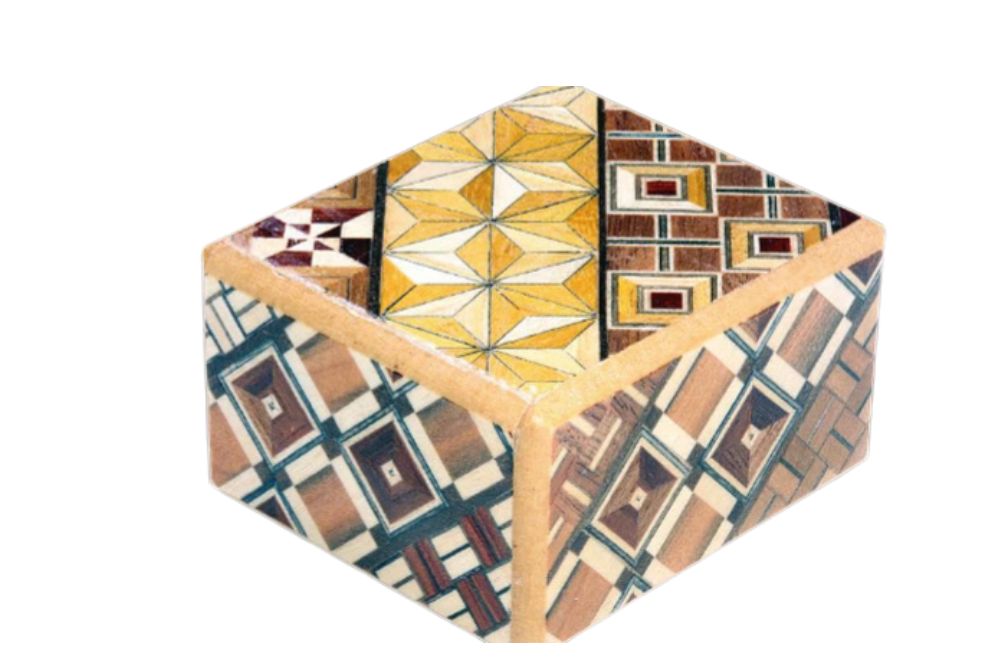
Additional Unlocking Strategies
Force and Handling
When attempting to open a secret puzzle box, it’s important to handle it gently while observing its components.
Applying too much force might damage the box or the delicate mechanisms within. Be mindful of any wooden beams or joints, since they can provide helpful clues to the box’s unlocking process.
If there’s a ring or other piece of jewelry inside the box, it’s especially important to avoid using excessive force to protect the contents of the box.
Using Jiggling and Rocking Motions
One technique to consider when attempting to open a puzzle box is using jiggling and rocking motions.
Often, secret compartments within wooden boxes are designed to open only when a certain series of movements are performed.
By gently jiggling or rocking the box, the user might be able to discover these necessary actions and unlock the hidden compartment.
Leveraging Magnets
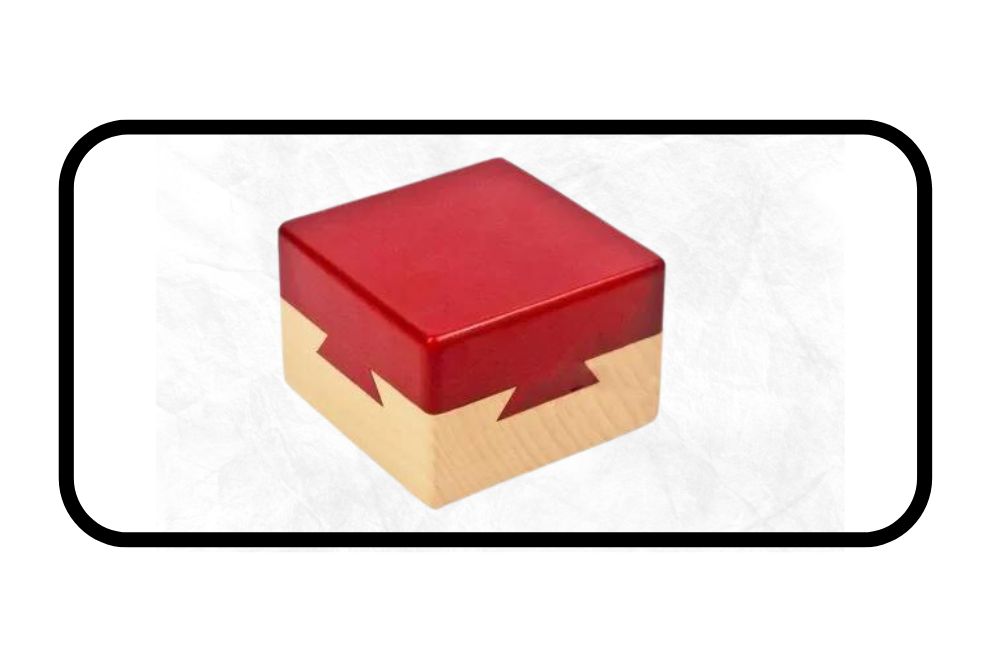
Some puzzle boxes employ magnets in their locking mechanism. In such cases, using a magnet can help unlock the secret compartment.
Approach this method with caution, as strong magnets might damage other components inside the box or affect a house’s magnetic field. When using magnets, follow these steps:
- Slowly move the magnet around the surface of the wooden box, taking note of any areas where it feels particularly attracted.
- Focus on these areas and try adjusting the position of the magnet. This might trigger the release of the locking mechanism.
- Check for any assembly or disassembly clues during this process, as they can offer additional insights into how the box opens.
Remember, a gentle touch and patience are key when trying to solve a puzzle box. By exploring these additional unlocking strategies, users can increase their chances of revealing the treasure hidden inside the secret compartments.
Puzzle Box Designs and Uses
Puzzle boxes come in various intricate designs and serve multiple purposes. Some boxes are themed, while others are rare, making them highly sought after by collectors.
Themed and Rare Puzzle Boxes
Themed puzzle boxes often draw inspiration from various cultures and symbols.
For instance, Japanese puzzle boxes showcase sophisticated craftsmanship with their detailed wooden patterns, requiring multiple hidden steps to be opened.
Other examples include puzzle boxes shaped like pineapples, animals, or heart designs.
Rare puzzle boxes can be limited editions or customized by artists, making them valuable additions to collections.
These rare boxes may include a ball-lifting mechanism, exceptional materials, or unique designs. Some may even come with a plush velvet interior, adding an extra layer of luxury.
Usage as Souvenirs and Decor
Puzzle boxes are popular souvenirs, especially when traveling to regions with a rich history of crafting these intricate items, such as Japanese puzzle boxes. Intricate designs, vibrant colors, and culturally significant symbols increase their appeal as decorations.
In addition, they can make excellent conversation pieces when displayed in one’s home. Common themes include nature-inspired elements, such as island landscapes, or intricate patterns resembling traditional art or statues.
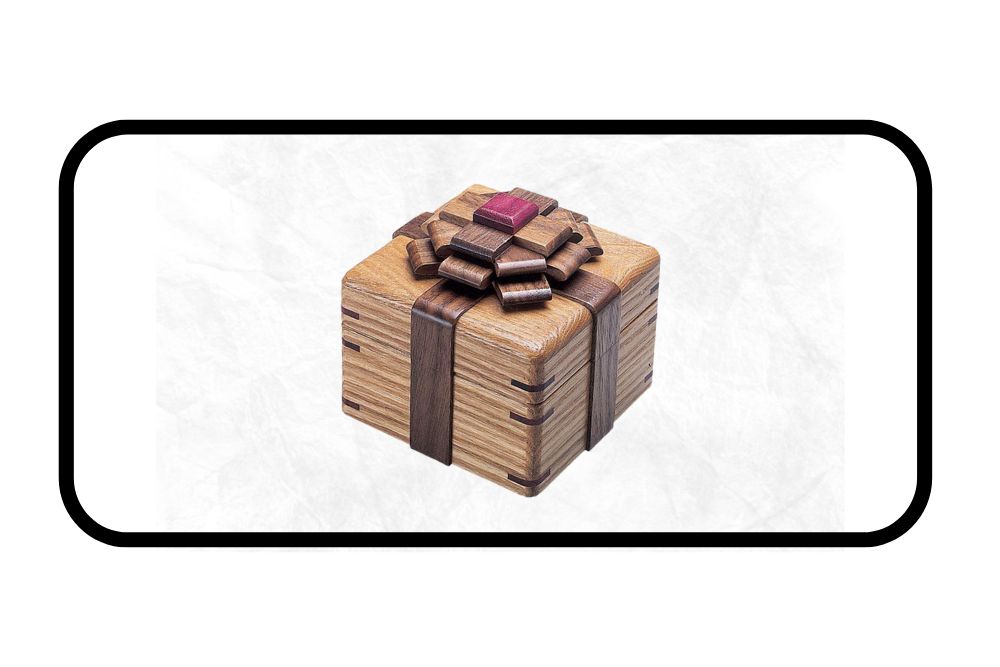
Storage for Valuables
Beyond their decorative nature, puzzle boxes also serve as functional storage. They can hold small valuables like jewelry, coins, or sentimental mementos.
The boxes’ unique locking mechanisms add an extra layer of security, as they require specific steps to be unlocked, deterring any casual tampering.
The sense of mystery and exclusivity provided by these boxes makes them ideal for safely storing cherished items.
Frequently Asked Questions
How do you solve a Japanese Yosegi Puzzle Box?
Japanese Yosegi Puzzle Boxes are known for their intricate design and sliding mechanisms. To solve one, examine the box carefully for any movable parts or notches.
Slide these parts in a specific sequence to gradually reveal the hidden compartment. Note that every Yosegi Puzzle Box may have a unique solution, so practice patience to solve it.
What are some solutions for wooden puzzle boxes?
Wooden puzzle boxes come in various types and designs. Some solutions may involve sliding panels, rotating parts, or using a combination of moves.
A common approach is to inspect the box and locate any movable pieces, then experiment with different sequences to unlock the secret compartment. Websites like WikiHow offer step-by-step instructions for specific designs.
How can I unlock a wooden money puzzle box?
Unlocking a wooden money puzzle box may require a combination of moves. First, examine the box for any movable parts and try sliding or rotating them.
Next, investigate if the pieces fit together to reveal the hidden compartment. Keep experimenting with different combinations until you discover the solution.
What is the technique to open a Moroccan puzzle box?
Moroccan puzzle boxes often feature a locking mechanism hidden within one or more sliding panels.
To open the box, locate the hidden panel(s) and slide them in the correct sequence.
Pay attention to the design and craftsmanship, as clues might be integrated within the decorations on the box. As with other puzzle boxes, patience and a keen eye for detail are essential.
Can you provide guidance on opening a Chinese puzzle box?
Chinese puzzle boxes often involve sliding panels or hidden compartments. Like other puzzle boxes, start by examining the box for any obvious clues or movable parts.
Experiment by sliding panels or rotating pieces in different positions to reveal the hidden compartment. Keep in mind that each Chinese puzzle box might have a unique solution, so patience is key.
What is the solution for an impossible box puzzle?
Impossible box puzzles are designed to be incredibly difficult, sometimes seeming unsolvable. The solution to these puzzles often involves locating hidden or disguised compartments, panels, or mechanisms.
Persistence and a keen eye for detail are crucial when attempting to solve an impossible box puzzle. Keep exploring and testing different combinations until you deduce the solution.
Key Takeaways
When attempting to open a secret puzzle box, it’s important to carefully observe and analyze the box and its components. Look for any clues or hints that may provide insight on how to unlock it.
Puzzle boxes may have a series of intricate moves, such as sliding, unlocking, lifting, and pressing to reveal their hidden compartment1.
Counting the number of wooden beams surrounding the box can help to determine the complexity of the opening process2. Boxes with four beams usually require additional steps compared to those with only two beams.
Remember never to use force when manipulating a puzzle box, as its pieces should move easily if they are meant to3.
Some puzzle boxes may even have hidden levers or openings that need to be located and manipulated in order to unlock the box4. Patience and attention to detail are key in discovering these hidden mechanisms.
By following these tips and practicing with different types of puzzle boxes, you can become skilled in opening them and enjoy the challenge they provide.


